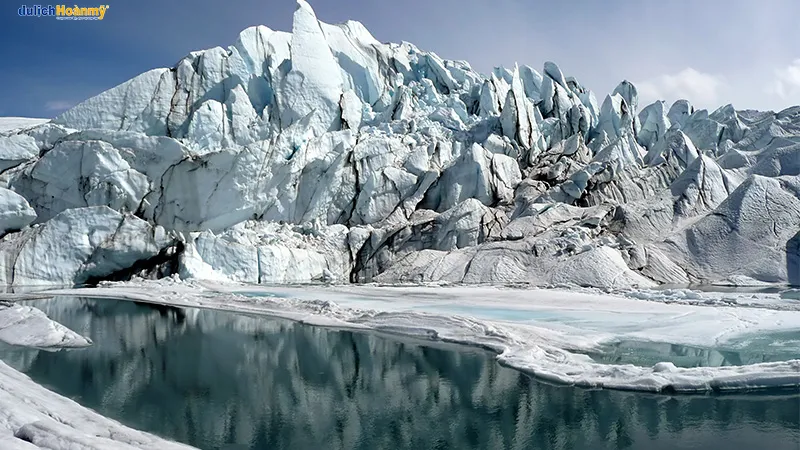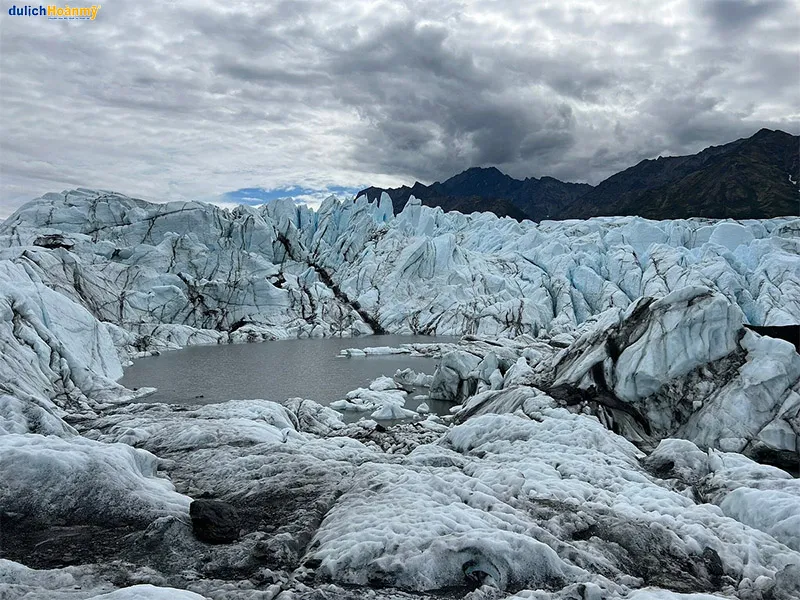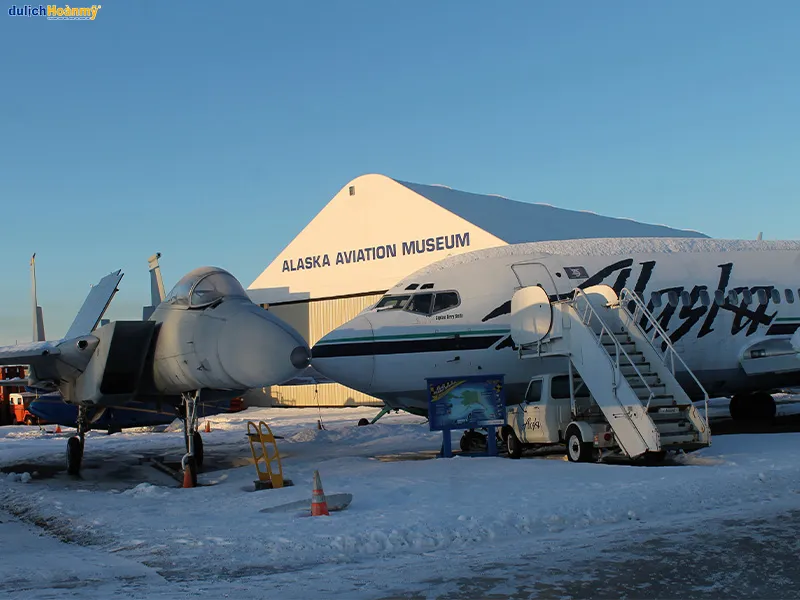Alaska, the largest and most sparsely populated state in the United States, has long been known as “The Last Frontier.” This land is renowned not only for its majestic mountains, vast forests, and diverse wildlife but also as a realm of glaciers. With thousands of glaciers, both large and small, Alaska boasts a unique and magnificent icy landscape that captivates visitors from around the globe. Among these countless glacial wonders, some stand out due to their imposing beauty, immense size, and the unique travel experiences they offer. Join “Du lịch khắp thế gian” (Travel Around the World) as we explore the most majestic glaciers in Alaska, where you can witness firsthand the power and endless beauty of nature.
Alaska proudly holds the highest number of glaciers in the United States, and perhaps in the world. These colossal ice formations are not only an integral part of Alaska’s landscape but also play a crucial role in the global ecosystem and climate. Formed over thousands of years, Alaska’s glaciers are living proof of nature’s creative power and a reminder of our planet’s constant evolution.
In this article, we will not only admire the external beauty of these glaciers but also delve into their formation process, unique characteristics, and the exciting travel experiences they provide. From the easily accessible Matanuska Glacier by road to the massive Hubbard Glacier and the vividly blue Mendenhall Glacier, each glacier in Alaska carries its own story, a unique beauty waiting for you to discover.
Why is Alaska a Glacier Paradise?
To understand why Alaska is home to so many majestic glaciers, we need to consider the region’s unique geographical location and climate. Situated at a high latitude, Alaska is strongly influenced by the Arctic climate, characterized by long winters and low temperatures. Heavy snowfall during winter, combined with rugged mountainous terrain, creates ideal conditions for glacier formation and growth.
Majestic mountain ranges such as the Alaska Range, Chugach Mountains, and Wrangell Mountains act as giant “ice mills.” Snow falling on high peaks accumulates over years, and under the pressure of gravity and continuous freeze-thaw cycles, it gradually transforms into ice. When the ice mass reaches a certain thickness, it begins to move slowly down valleys under the force of gravity, forming magnificent glaciers.

Alaska not only has a frigid climate and mountainous terrain but also receives abundant moisture from the Pacific Ocean. Moisture from the sea blows inland, cools, and condenses into rain and snow, providing an endless source of “raw material” for glacier formation. This perfect combination of geographical and climatic factors has transformed Alaska into a glacial paradise, where glaciers continuously sculpt a unique and magnificent natural landscape.
Matanuska Glacier: An Accessible Icy Gem
When mentioning the most majestic glaciers in Alaska, the Matanuska Glacier cannot be overlooked. Renowned as the largest glacier in Alaska accessible by car, Matanuska Glacier is an ideal destination for those wanting to experience icy beauty without long hikes or strenuous climbs. Located about 160km northeast of Anchorage, Matanuska Glacier is easily accessible via the Glenn Highway, one of Alaska’s most scenic routes.
Extending approximately 43km in length and over 6km wide at its terminus, Matanuska Glacier meanders like a colossal ice river through the Mat-Su Valley, framed by the imposing Chugach and Talkeetna Mountains. A remarkable feature of Matanuska Glacier is its diverse terrain and colors. On the ice surface, you can admire towering ice walls, deep crevasses, crystal-clear ice streams, and even enchanting blue ice caves.
Visiting Matanuska Glacier offers a variety of exciting experiences. Glacier hiking is the most popular activity, allowing you to explore the glacier’s beauty up close under the guidance of experienced professionals. You will be equipped with specialized crampons to ensure safety when walking on the slippery ice surface. Additionally, you can try ice climbing, ice kayaking on glacial lakes, or even a helicopter tour for a panoramic view of the glacier from above.
Matanuska Glacier is not only a magnificent natural wonder but also a frozen “history book.” Scientists have studied and determined that the ice at the glacier’s source is up to 4 centuries old, approximately 400 years. Throughout its 43km journey from source to terminus, each ice layer records past climate and environmental changes.

Discover Other Majestic Glaciers of Alaska
Besides Matanuska Glacier, Alaska is home to countless other majestic glaciers, each with its own unique beauty and characteristics. Here are a few notable names you shouldn’t miss when visiting Alaska:
- Hubbard Glacier: Known as the largest tidewater glacier in North America, Hubbard Glacier impresses with its immense size and rapid movement. The vast ice face of Hubbard Glacier stretches over 11km where it meets the sea, forming a towering ice wall amidst the ocean. Visitors often choose cruises to admire the grandeur of Hubbard Glacier and have the chance to witness “calving”—when large blocks of ice break off from the glacier and plunge into the sea, creating loud booms and white splashes.
- Mendenhall Glacier: Located near Juneau, Alaska’s capital, Mendenhall Glacier is one of the most accessible glaciers in Alaska. You can easily reach Mendenhall Glacier by car or bus from downtown Juneau. Mendenhall Glacier is famous for its distinctive blue color and the serene beauty of Mendenhall Glacier Lake, a lake formed by glacial meltwater. Here, you can hike on trails around the lake, kayak on the lake, or visit the Mendenhall Glacier Visitor Center to learn more about the glacier and its surrounding ecosystem.
- Exit Glacier: Located in Kenai Fjords National Park, Exit Glacier is a rapidly retreating glacier, a clear demonstration of the impact of climate change. However, this does not diminish Exit Glacier’s beauty. With its accessibility and many exciting activities, Exit Glacier remains a favorite destination for visitors. You can hike to the glacier’s toe on the Glacier Overlook Trail or join an ice hiking tour to explore deeper into the glacier.
- Columbia Glacier: Located in Prince William Sound, Columbia Glacier is one of the fastest-moving glaciers in the world. Columbia Glacier frequently calves, creating countless icebergs of various sizes in the sound. Cruising is the ideal way to explore Columbia Glacier and Prince William Sound, where you can admire breathtaking glacial landscapes and observe wildlife such as seals, sea otters, and seabirds.
Unique Experiences at Alaskan Glaciers
Glacier tourism in Alaska is not just about sightseeing; it’s also an opportunity to engage in unique and exciting activities, immerse yourself in wild nature, and discover the wonders of the icy world. Here are some suggested experiences you shouldn’t miss:
- Glacier Hiking: This is the most popular and beloved activity when visiting Alaskan glaciers. You will be equipped with specialized crampons and, along with a professional guide, explore the glacier surface, admiring stunning ice walls, crevasses, ice caves, and glacial lakes.
- Ice Climbing: If you are adventurous and want to challenge yourself, ice climbing is an unmissable experience. Under the guidance of experts, you will learn how to use specialized climbing gear and conquer vertical ice walls.
- Ice Kayaking: Another unique experience is kayaking on glacial lakes formed by meltwater. You will glide gently on the turquoise water, gazing at the glacier landscape from a completely new perspective.
- Glacier Helicopter Tour: For a panoramic and comprehensive view of the glacier’s grandeur, nothing beats a helicopter tour. From above, you will admire meandering glaciers, towering ice walls, and vast glacial lakes stretching to the horizon.
- Wildlife Viewing: Alaskan glaciers are not only icy environments but also habitats for many wildlife species. You may have the chance to observe seals, sea otters, seabirds, black bears, and even whales when participating in glacier tours.

Tips for Traveling to Alaskan Glaciers
To have a complete and memorable glacier trip in Alaska, keep in mind these helpful tips:
- Ideal Time to Visit: Summer (June – August) is the most popular time to visit Alaska, with warm weather and long daylight hours. However, if you want to experience winter activities like skiing and see the Northern Lights, winter (November – March) is also an exciting option. Fall (September – October) and spring (April – May) are less crowded seasons, with beautiful natural scenery and more affordable prices.
- Clothing Preparation: No matter when you travel to Alaska, always prepare warm, waterproof, and windproof clothing. Temperatures in glacier areas are often lower than in other regions, and weather can change suddenly. Hiking boots or specialized mountaineering shoes are necessary if you plan to hike on ice.
- Book Tours in Advance: Glacier tours, especially ice hiking, ice climbing, and helicopter tours, often have limited spots and fill up quickly, especially during peak season. Therefore, book your tours in advance to ensure you can participate in your desired activities.
- Safety First: When participating in activities on glaciers, always follow the instructions of experienced guides and ensure your personal safety. Do not venture out of safe areas or engage in risky actions.
Conclusion
The most majestic glaciers in Alaska are not just magnificent natural wonders but also symbols of the power and endless beauty of wild nature. A journey to explore these icy glaciers will bring you unforgettable experiences, uplifting emotions, and cherished memories. Come to Alaska to witness firsthand the grandeur of glaciers, immerse yourself in pristine nature, and discover the wonders of “The Last Frontier.” And remember, “Du lịch khắp thế gian” (Travel Around the World) is always ready to accompany you on every journey of global exploration!